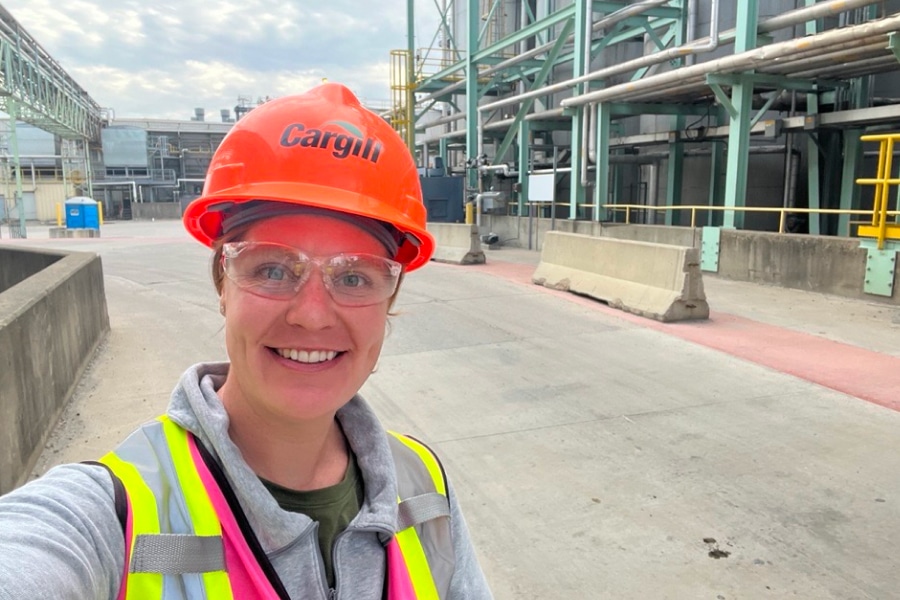Tim Cuga-Moylan is the director of design development at Gurtz Electric Co., where he’s spent his entire 18-year career.
When he’s not designing and modeling all aspects of an electrical system for a construction project, Cuga-Moylan is giving back as an instructor at IBEW-NECA Technical Institute near his home just outside of Chicago, Illinois.
The Bluebeam Blog spoke with Cuga-Moylan about how construction technology is transforming the industry as well as how he uses Revu in his classroom. Edited excerpts follow.
Bluebeam Blog: What do you think is the biggest challenge facing design and building professionals?
Cuga-Moylan: How fast we move information around has become a problem when it comes to trying to build these jobs before they’re actually finished designing. As designers you’re just trying to then keep up with construction. Since everything’s now digital and you can go across the emails and changes keep happening even throughout the build life cycle. You’re just in this constant state of, ‘Am I building off the most current thing?’ Because it might’ve changed yesterday and they’re pouring concrete today.
Bluebeam Blog: How has technology evolved in the time you’ve been working in the field?
Cuga-Moylan: When I started, everything was completely paper and you were hand drawing everything. I would say in the last 10 years it’s just taken off to a point of where you don’t see a lot of paper on the jobsites anymore. You have a foreman, general foreman, journeyman apprentices on iPads, on laptops, working in Bluebeam. Then some are also working in design programs.
Bluebeam Blog: When were you first introduced to using Revu in your job? How are you using it today?
Cuga-Moylan: I don’t remember the exact year that I started using Revu. I have to say it’s been at least five years or longer and it came from using Adobe and then wanting something better. I found this program, Revu, and it gives you so many additional tools that Adobe doesn’t offer.
I use it for markups, takeoffs and estimating. On a regular day, I’m probably getting into a Studio Project and a Studio Session.
We’ll just do all our markups and as-built information directly in Bluebeam. The ability for it to be that precise and adaptable approaching a level of CAD, maybe not the degree of accuracy per measurement. It’s so much more powerful than any PDF Adobe product that I’ve seen.
Bluebeam Blog: How have you integrated using Revu in the classroom?
Cuga-Moylan: In the class I teach building information modeling. I teach apprentices, journeymen and project managers all across the electrical industry. I try to keep it pretty basic as many of them are coming from the field and it is an intro class.
I don’t really get to dive into all of the Studio Sessions, Studio Projects and all that. That class happens to be more on the basic side; we’ll touch on a little bit of everything that I use on a regular basis for estimating takeoffs and measurements. We spend three nights just focusing on Bluebeam and then it pops back into the class on a regular basis. That’s our go-to for exposing all the field guys and even office people to come to more powerful PDF platforms.
Bluebeam Blog: What impressions do your students give you about working with the software?
Cuga-Moylan: The response I’ve gotten is very positive. They appreciate they can make changes after the fact. It takes them a little bit of a learning curve of figuring out basic polylines and stuff like that. But once they figure out that they can put it in and then make changes and change colors and move it after the fact. They’re sold because it lets them have like a running as-built.
Bluebeam Blog: What would you say is the biggest benefit technology has brought to your job?
Cuga-Moylan: I think the customer is getting a better product and saving everyone money because if there are changes a lot of times before they weren’t getting pushed because of the paper and that slow process. High premium construction doesn’t change when the general contractor has roof plans. They’re going to build for those plans no matter what changes are happening.
Prior, you would have made a change and by the time I made it to the building paper document that wall would have already been built. You would have torn down the wall and now you’re doing work twice, maybe three times. When a change happens, it’s an email that goes out to the foreman running the job. He knows he might be going to be roughing it in this wall. And he gets that change in before drywall goes up.
You’re saving time and you’re saving everyone up and down the line money. Ultimately, you’re also saving project schedule too because you’re getting that stuff in a first time down and not finishing it, tearing it down, rebuilding it. That’s one of the biggest things.
Then at the end of the job, you’re giving the customer a better product from an as-built standpoint because you have more accurate digital as-builds vs. before you were trying to track down paper prints that were in a box that need to make it back to an office to get put in properly. You have a proper digital workflow set up for your foreman and your apprentices. Anyone down the line can capture that information as they’re putting it in.
Bluebeam Blog: What advice do you have for students who are looking to follow in your footsteps?
Cuga-Moylan: Learn as much as you can. Ask as many questions as you can. A lot of the stuff that is learned is self-taught. Just trying to figure it out yourself. What’s the latest technology out there? How can I learn more about it? There are so many things on Bluebeam’s website.











